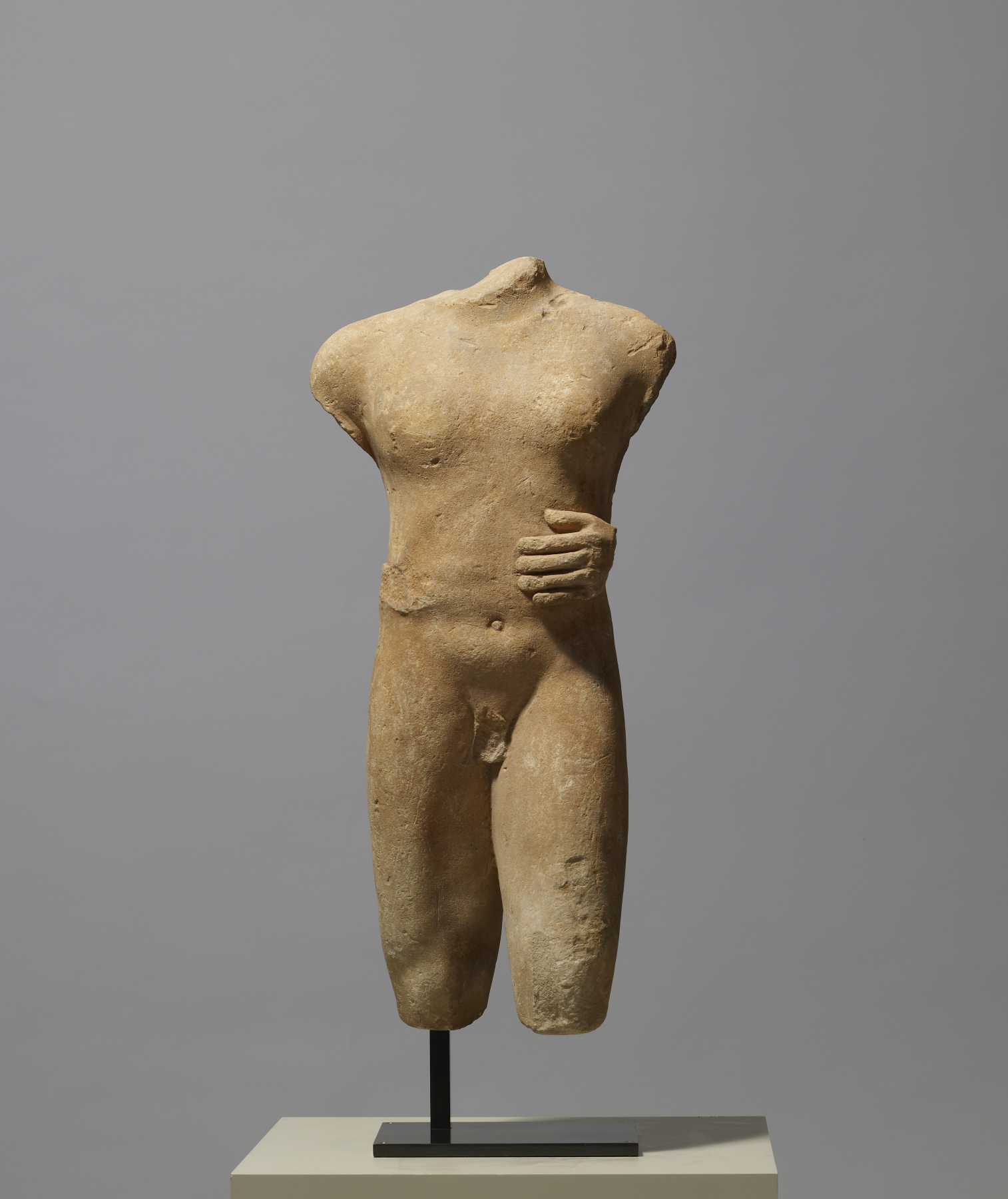Kouros
(Ancient Greece )
A large stone figure of a nude youth with its left foot forward, called a "Kouros" (plural "Kouroi"), was the most common male representation during the Archaic period. Usually, these statues have their hands by their sides, but this one has the shoulders pulled back and the hands curiously set below the chest. The now-missing right hand was either attached to the side like the better-preserved left palm, or it was placed close to the body holding an offering. Like most "Kouroi," the statue was probably set in a sanctuary or marked the tomb of a young aristocrat.
Provenance
Provenance (from the French provenir, 'to come from/forth') is the chronology of the ownership, custody, or location of a historical object. Learn more about provenance at the Walters.
Family of Comte Hervé de Montalembert, Neuilly, France [acquired in Turkey during the 1930s]; Jean-Luc Chalmin, London; Alan Safani Gallery, New York; Walters Art Museum, 1996, by purchase.
Measurements
23 1/4 x 12 3/16 x 6 11/16 in. (59 x 31 x 17 cm)
Credit Line
Museum purchase with funds provided by the Ancient Art Acquisition Fund, 1996
Location in Museum
Accession Number
In libraries, galleries, museums, and archives, an accession number is a unique identifier assigned to each object in the collection.
In libraries, galleries, museums, and archives, an accession number is a unique identifier assigned to each object in the collection.
23.279


